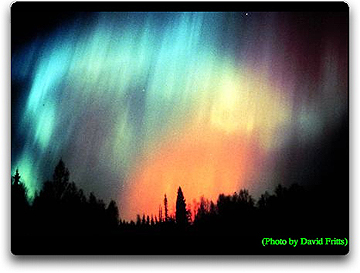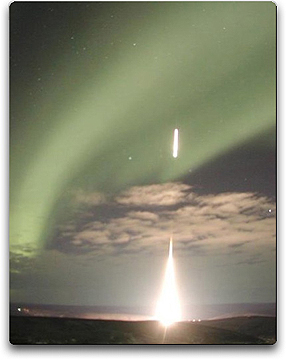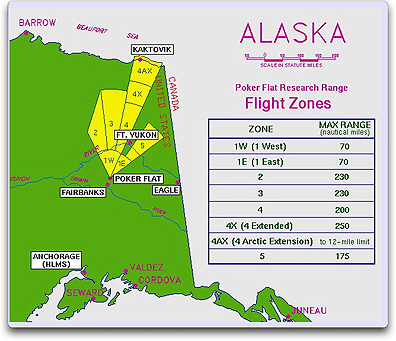 The team had to wait for days for the exact aurora conditions, and when they occurred, the scientists from the University of Iowa finally saw the launch of its two scientific sounding rockets from Poker Flat Research Range, Alaska.
The team had to wait for days for the exact aurora conditions, and when they occurred, the scientists from the University of Iowa finally saw the launch of its two scientific sounding rockets from Poker Flat Research Range, Alaska. The NASA rockets launched January 29, just before 1 a.m. Alaska Standard Time, and
flew through an auroral curtain, collecting data throughout their flights. Scientists with the Auroral Current and Electrodynamics Structure mission, or ACES for short, work to gain a clearer
picture of aurora structure by simultaneously collecting data from both the top and bottom edges of an auroral arc.

To get the data, two rockets were launched. A
two-stage Black Brant IX launched at 12:49 a.m. and reached an altitude of more than 226 miles. The rocket flew for just under 10 minutes. At 12:50 a.m.,
a single-stage Black Brant V launched, reaching an altitude of nearly 83 vertical miles, flying for roughly eight minutes.
In this image from a similar test in 2003, a rocket carried a payload designed to measure high-frequency wave signals related to aurorae. Credit: Chuck Johnson and Astronomy.com
The payloads of each ACES rocket performed well during flight.
Principal Investigator Scott Bounds of the University of Iowa and the ACES team will begin to analyze all of the data collected, which should keep them busy for the next year. Bounds said this information will help refine current models of aurora structure.
The ACES mission will provide insight on the structural subtleties of the aurora, details that researchers may have missed when previous measurements were done using only a single vehicle.
The ACES rockets were loaded onto launchers and had been ready to fly since January 14.
Each evening scientists scanned the sky with cameras at local and downrange sites for a sufficient auroral arc to appear just north of Fort Yukon. A stable, thin arc was required for the experiment to perform optimally and finally that arc appeared early on January 29.

Bounds, from the Department of Physics and Astronomy at the University of Iowa, worked on six previous launches from Poker Flat Research Range as a
postdoctoral fellow and as a co-investigator. The ACES mission is the first project he's managed as the principal investigator. "I certainly feel relieved now that we've launched," Bounds said. "The pressure was much greater before today." Bounds and his team aren't taking much time to re-group. The team plans to
return to Poker Flat Research Range in 2010, as the University of Iowa is a collaborator for another launch scheduled at the range.
Source: University of Alaska Fairbanks
Topical Tags :
Regional Tags :

